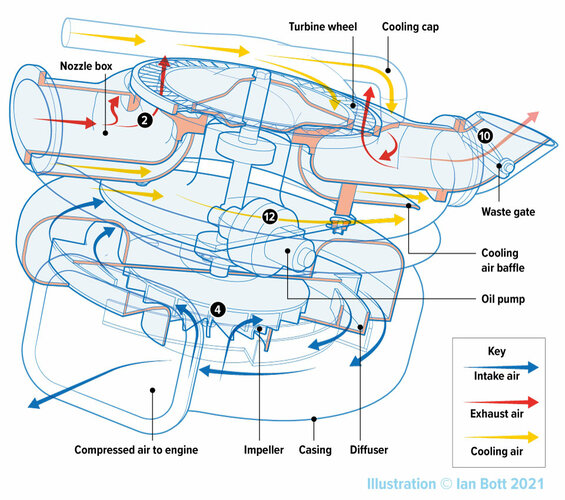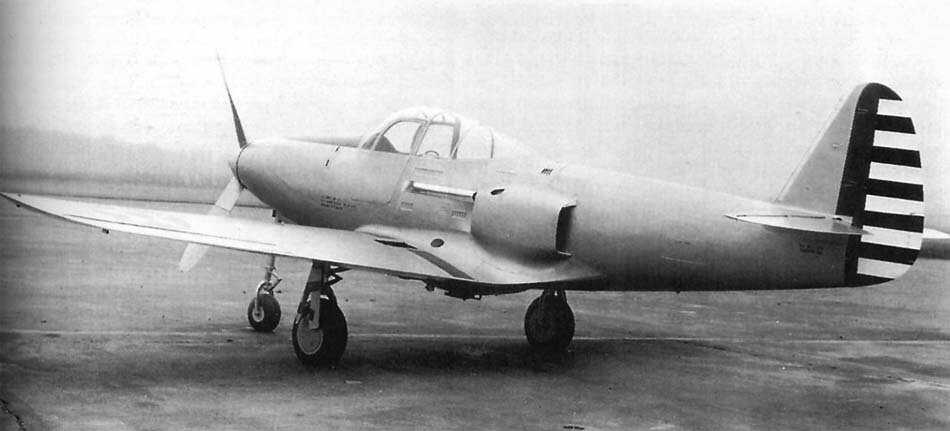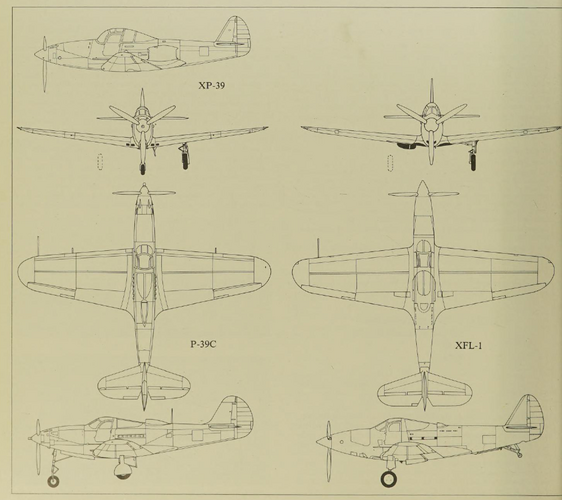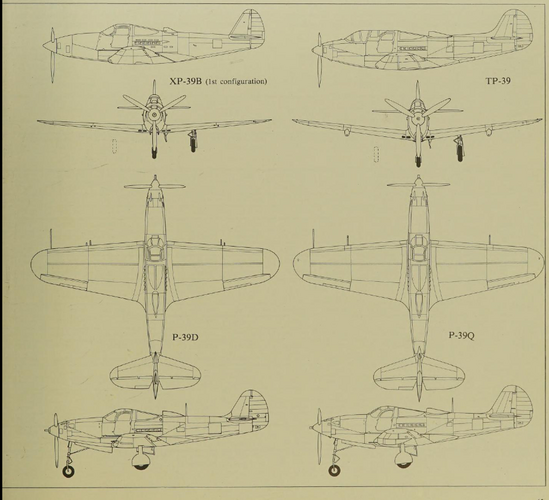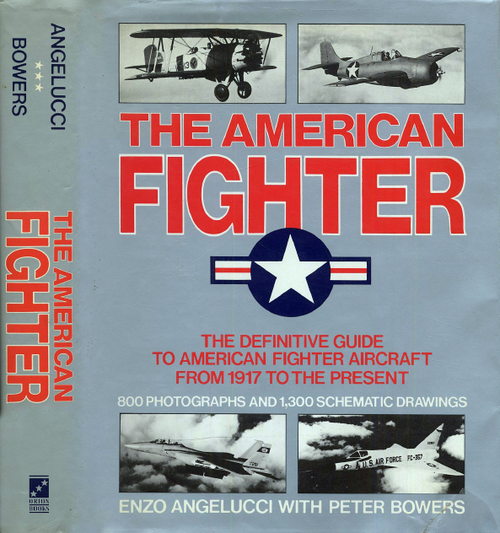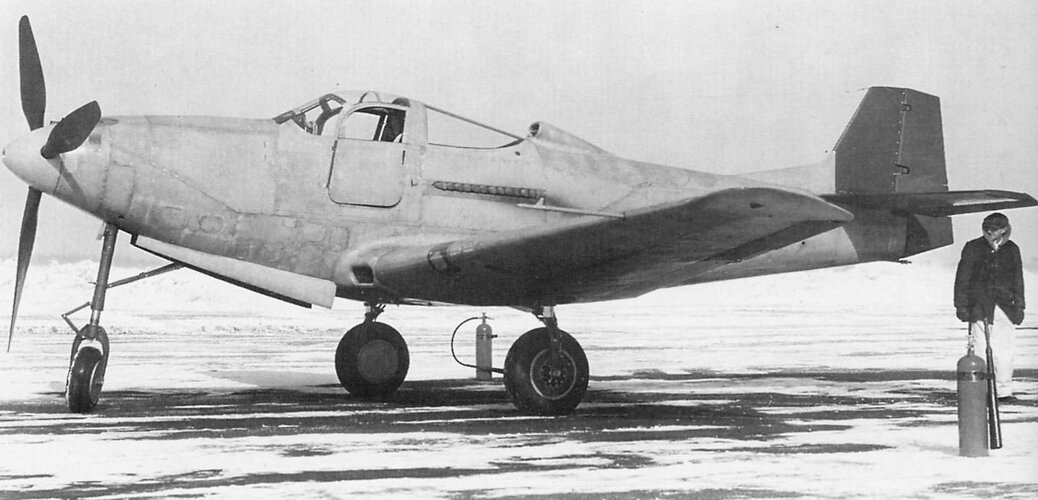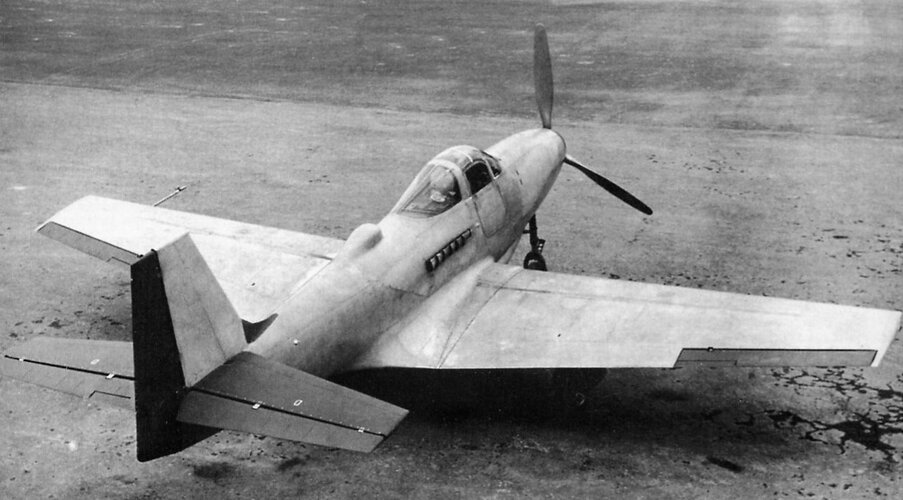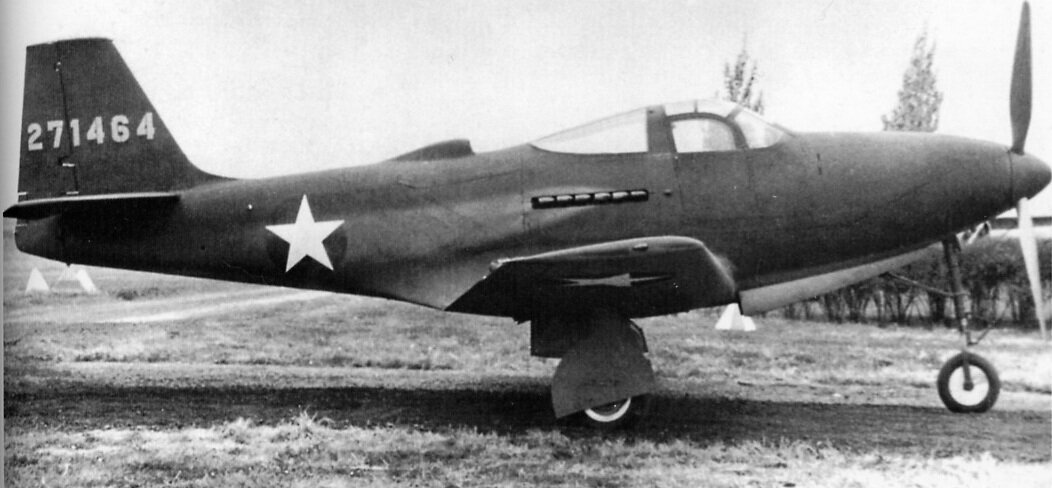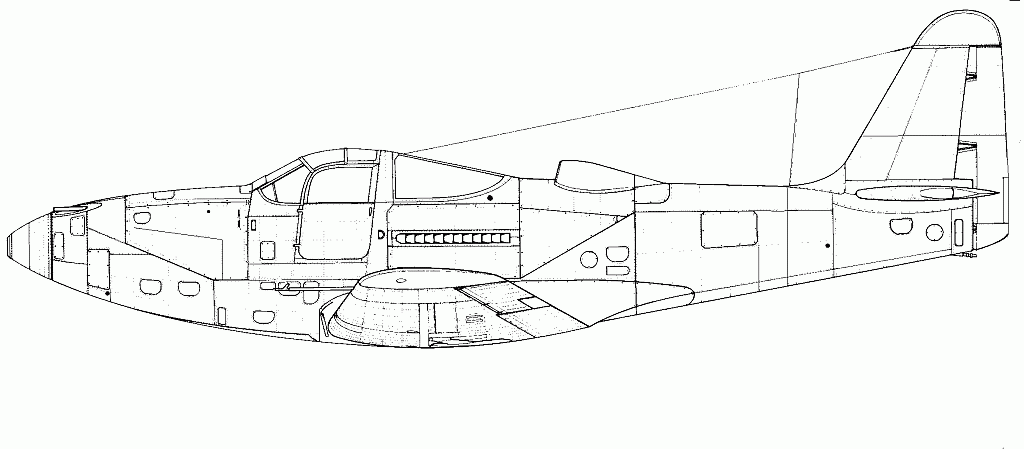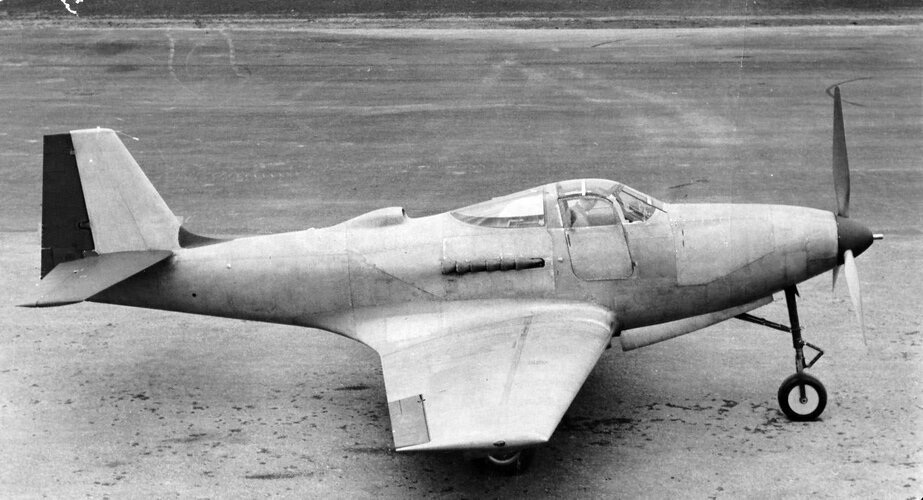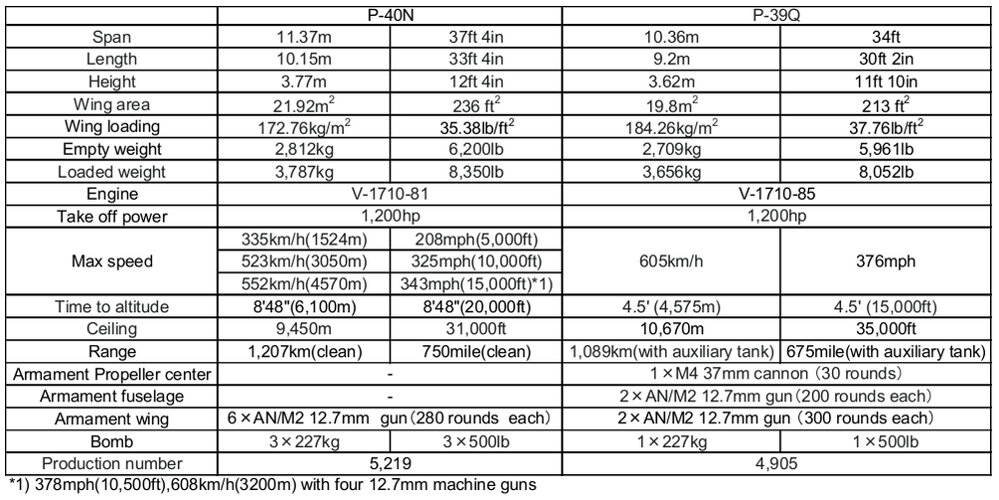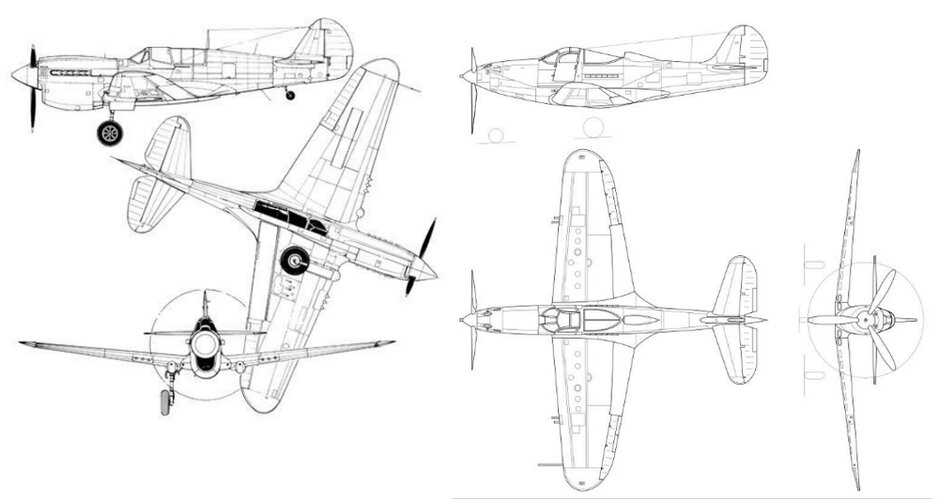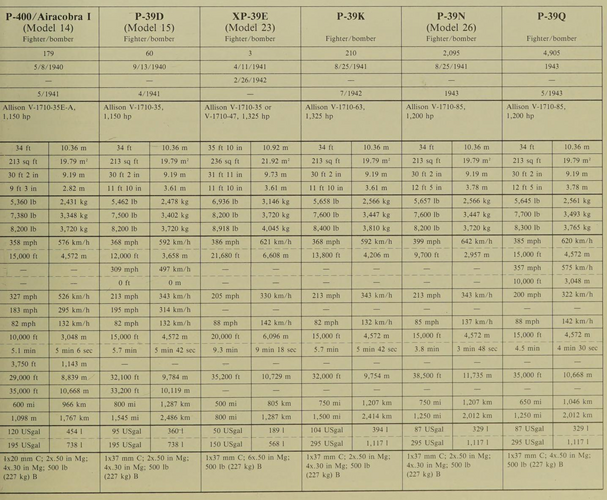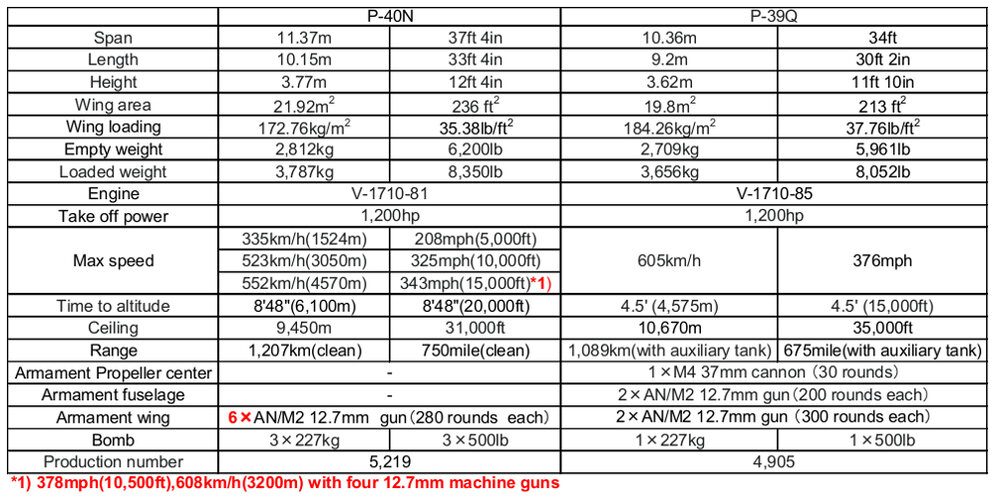blackkite
Don't laugh, don't cry, don't even curse, but.....
- Joined
- 31 May 2007
- Messages
- 8,575
- Reaction score
- 6,766
「At the beginning of the development, P-39 was planned as high altitude interceptor with turbocharger.
The XP-39 made its maiden flight on 6 April 1938.
However, the XP-39 was found to be short on performance at altitude.
Flight testing had found its top speed at 20,000 ft (6,100 m) to be lower than the 400 mph (640 km/h) of the original proposal.
In June 1939 the prototype was ordered to be evaluated in NACA wind tunnels to find ways of increasing its speed, by reducing parasitic drag.
Tests were carried out, and Bell engineers followed the recommendations of NACA and the Army to reduce drag such that the top speed was increased 16%. NACA wrote, "it is imperative to enclose the supercharger within the airplane with an efficient duct system for cooling the rotor and discharging the cooling air and exhaust gases." In the very tightly planned XP-39, though, there was no internal space left over for the turbo. Using a drag-buildup scheme, a number of potential areas of drag reduction were found. NACA concluded that a top speed of 429 mph (690 km/h) could be realized with the aerodynamic improvements they had developed and an uprated V-1710 with only a single-stage, single-speed supercharger.
At a pivotal meeting with the USAAC and NACA in August 1939, Larry Bell proposed that the production P-39 aircraft be configured without the turbocharger.
The Army ordered 12 YP-39s (with only single-stage, single-speed superchargers) for service evaluation and one YP-39A. After these trials were complete, which resulted in detail changes including deletion of the external radiator, and on advice from NACA, the prototype was modified as the XP-39B; after demonstrating a performance improvement.
The production P-39 retained a single-stage, single-speed supercharger with a critical altitude (above which performance declined) of about 12,000 ft (3,700 m). As a result, the aircraft was simpler to produce and maintain. However, the removal of the turbo destroyed any chance that the P-39 could serve as a high-altitude front-line fighter. When deficiencies were noticed in 1940 and 1941, the lack of a turbo made it nearly impossible to improve upon the Airacobra's performance. The removal of the turbocharger and its drag-inducing inlet cured the drag problem but reduced performance overall.」

 en.wikipedia.org
en.wikipedia.org

The XP-39 made its maiden flight on 6 April 1938.
However, the XP-39 was found to be short on performance at altitude.
Flight testing had found its top speed at 20,000 ft (6,100 m) to be lower than the 400 mph (640 km/h) of the original proposal.
In June 1939 the prototype was ordered to be evaluated in NACA wind tunnels to find ways of increasing its speed, by reducing parasitic drag.
Tests were carried out, and Bell engineers followed the recommendations of NACA and the Army to reduce drag such that the top speed was increased 16%. NACA wrote, "it is imperative to enclose the supercharger within the airplane with an efficient duct system for cooling the rotor and discharging the cooling air and exhaust gases." In the very tightly planned XP-39, though, there was no internal space left over for the turbo. Using a drag-buildup scheme, a number of potential areas of drag reduction were found. NACA concluded that a top speed of 429 mph (690 km/h) could be realized with the aerodynamic improvements they had developed and an uprated V-1710 with only a single-stage, single-speed supercharger.
At a pivotal meeting with the USAAC and NACA in August 1939, Larry Bell proposed that the production P-39 aircraft be configured without the turbocharger.
The Army ordered 12 YP-39s (with only single-stage, single-speed superchargers) for service evaluation and one YP-39A. After these trials were complete, which resulted in detail changes including deletion of the external radiator, and on advice from NACA, the prototype was modified as the XP-39B; after demonstrating a performance improvement.
The production P-39 retained a single-stage, single-speed supercharger with a critical altitude (above which performance declined) of about 12,000 ft (3,700 m). As a result, the aircraft was simpler to produce and maintain. However, the removal of the turbo destroyed any chance that the P-39 could serve as a high-altitude front-line fighter. When deficiencies were noticed in 1940 and 1941, the lack of a turbo made it nearly impossible to improve upon the Airacobra's performance. The removal of the turbocharger and its drag-inducing inlet cured the drag problem but reduced performance overall.」

Bell P-39 Airacobra - Wikipedia

P-39 engine protection
I would imagine the engine will be more susceptible to rear gun attacks due to it being in the middle of the plane. Is there any evidence for or against this. Maybe there is extra armor? Thanks guys.
forum.il2sturmovik.com
Attachments
-
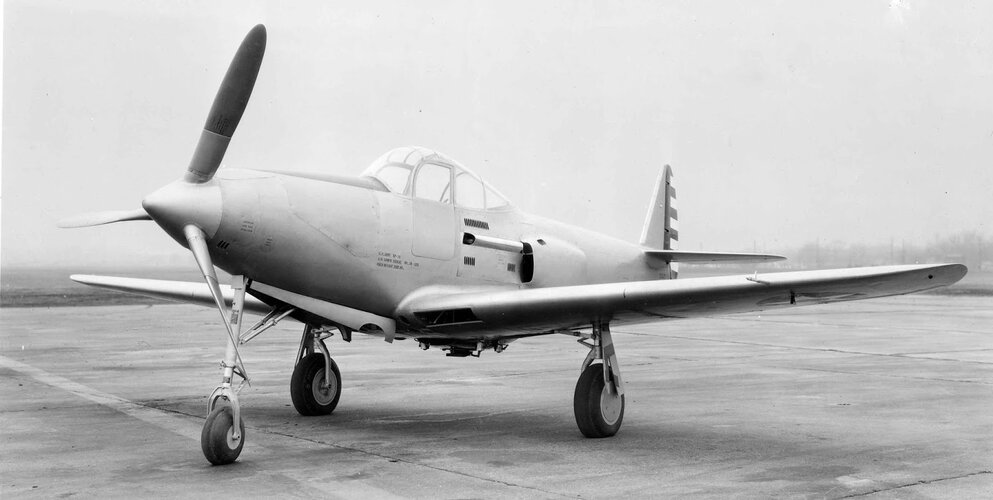 The Bell XP-39 prototype in the original turbosupercharged configuration. The intercooler and ...jpg154.6 KB · Views: 61
The Bell XP-39 prototype in the original turbosupercharged configuration. The intercooler and ...jpg154.6 KB · Views: 61 -
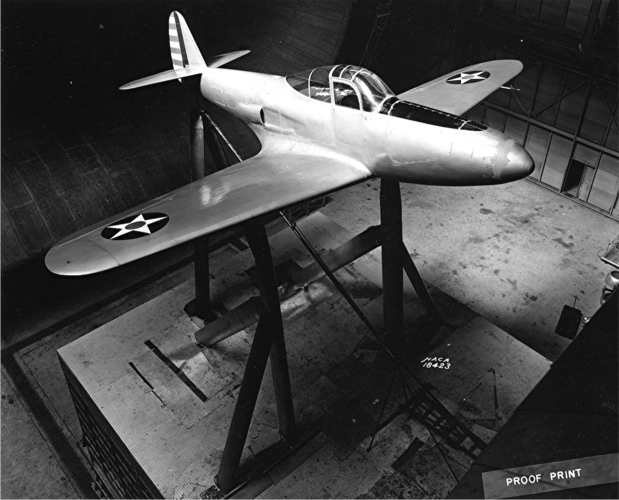 Bell XP-39 Airacobra 38-326 in the NACA Langley Memorial Aeronautical Laboratory Full-Scale Wi...png1.6 MB · Views: 42
Bell XP-39 Airacobra 38-326 in the NACA Langley Memorial Aeronautical Laboratory Full-Scale Wi...png1.6 MB · Views: 42 -
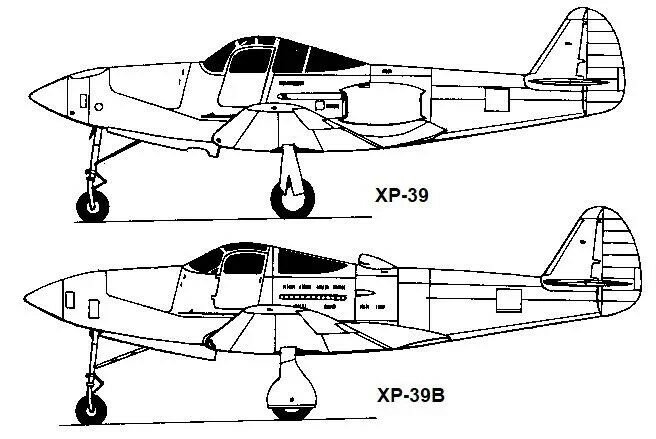 XP-39.jpg60.2 KB · Views: 47
XP-39.jpg60.2 KB · Views: 47 -
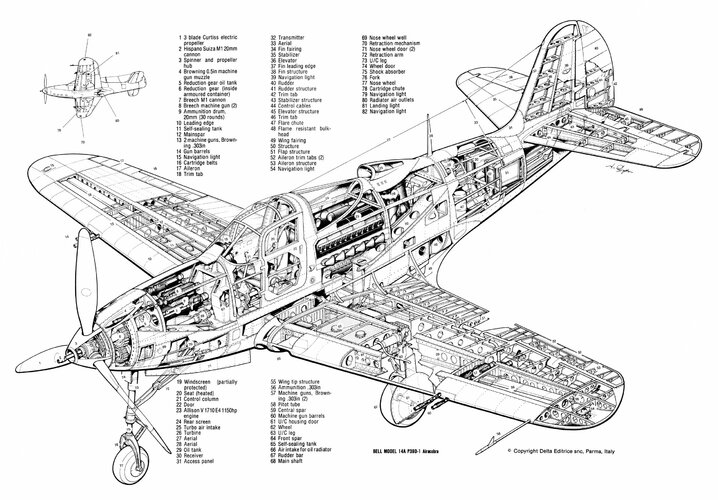 2021bc925595707e910e4e962c79e9ca.jpg693.5 KB · Views: 50
2021bc925595707e910e4e962c79e9ca.jpg693.5 KB · Views: 50 -
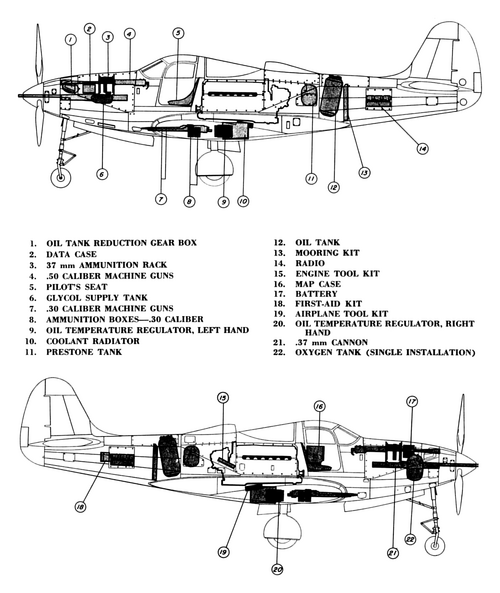 Bell_P-39K-L_internal.png302.7 KB · Views: 50
Bell_P-39K-L_internal.png302.7 KB · Views: 50
Last edited:


